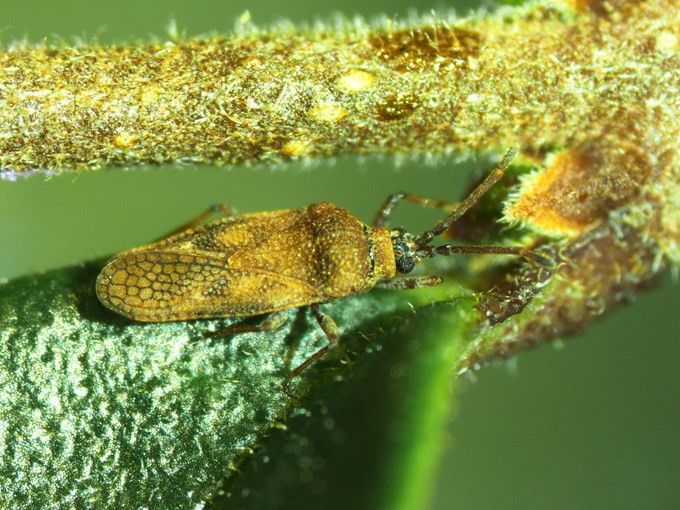There is hope on the horizon in the fight against Chinese privet, with the release of a tiny bug that feasts on the weed.
Chinese privet is the bane of many hay fever sufferers – it is thought to cause runny noses and itchy eyes.
It can also displace native plants, and the leaves and fruit are poisonous.
The Chinese privet lace bug has been recently released by Auckland Council’s biosecurity team in the Hunua Ranges Regional Park, and in the last week of January it was released at Birkenhead War Memorial Park on the North Shore, with Kaipatiki Local Board members and community group representatives on hand.
Bugs in the biocontrol battle
The lace bug is an example of biological weed control (biocontrol), which is control using a weed’s natural enemy.
Both the adults and the nymphs of the bug pierce and suck the mesophyll tissues from privet leaves. Mesophyll is the green material of a leaf that allows the plant to photosynthesise, so the bug’s actions leave the foliage looking bleached.
It can also lead to defoliation and reduced vigour of the plant, meaning other species can more easily compete.
“Privet is banned from sale and distribution in Auckland, and council does some site-led control, however it is so widespread that it makes control very expensive and our resources are limited,” says Holly Cox, Senior Biosecurity Advisor for Plants.
“This is why biocontrol is such an important tool, particularly against widespread, entrenched weed species.
"Successful biocontrol can provide long-term, low-cost weed control and allow resources to be used in other areas,” she says.
A proven method
Like the weed, Chinese privet lace bug is native to China. It was first imported to New Zealand in 2013 for study and testing, and it was approved for release in the field by the Environmental Protection Authority in 2015.
Biocontrol does not eradicate a weed but weakens it and reduce its abundance, making it easier to control with other methods and allowing native species to compete.
The privet lace bug is not the only agent working towards a Pest Free Kaipatiki. There are also beetles eating tradescantia in Birkenhead. Read about them here and find out about South Auckland’s green thistle beetles here.


